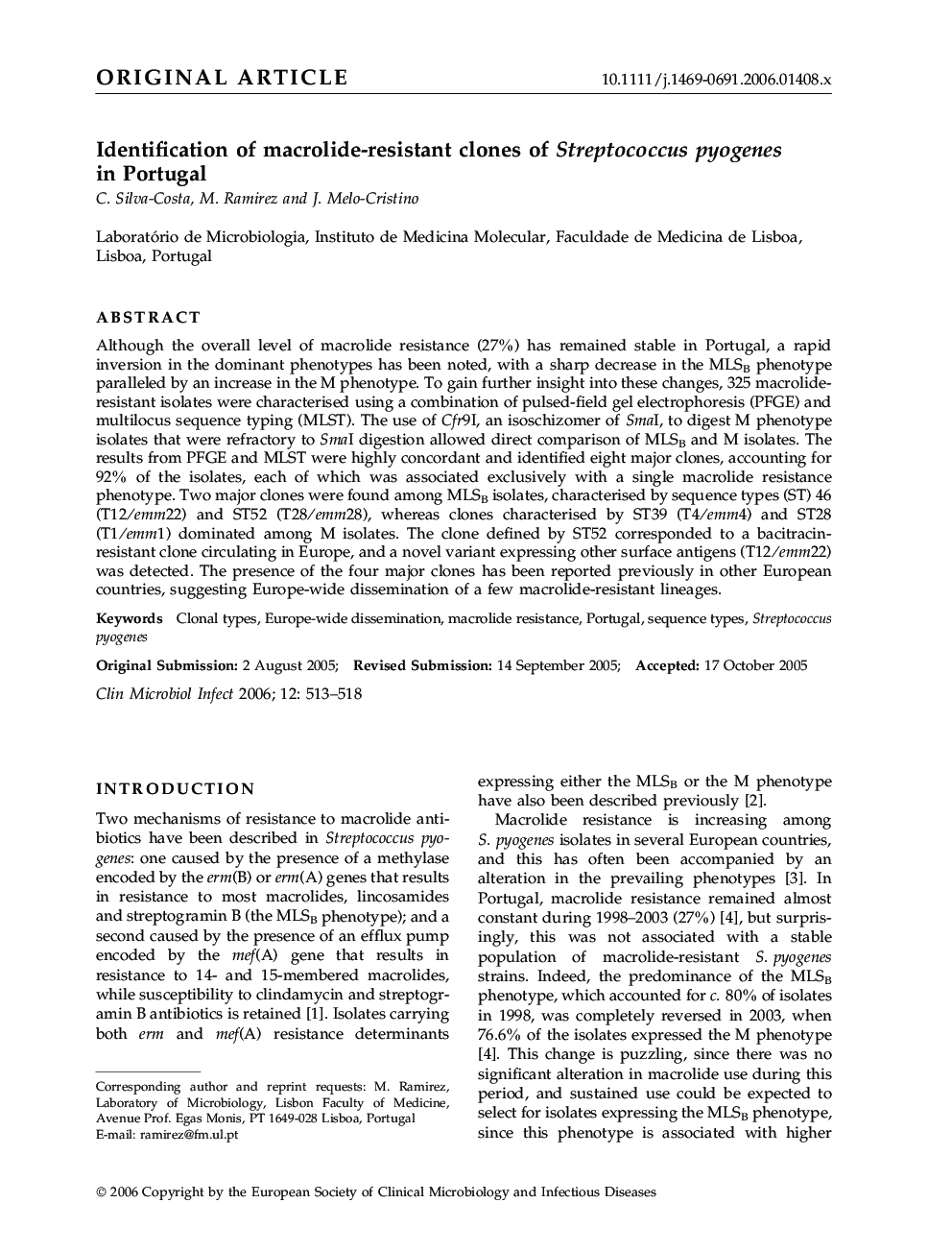| Article ID | Journal | Published Year | Pages | File Type |
|---|---|---|---|---|
| 3398598 | Clinical Microbiology and Infection | 2006 | 6 Pages |
ABSTRACTAlthough the overall level of macrolide resistance (27%) has remained stable in Portugal, a rapid inversion in the dominant phenotypes has been noted, with a sharp decrease in the MLSB phenotype paralleled by an increase in the M phenotype. To gain further insight into these changes, 325 macrolide-resistant isolates were characterised using a combination of pulsed-field gel electrophoresis (PFGE) and multilocus sequence typing (MLST). The use of Cfr9I, an isoschizomer of SmaI, to digest M phenotype isolates that were refractory to SmaI digestion allowed direct comparison of MLSB and M isolates. The results from PFGE and MLST were highly concordant and identified eight major clones, accounting for 92% of the isolates, each of which was associated exclusively with a single macrolide resistance phenotype. Two major clones were found among MLSB isolates, characterised by sequence types (ST) 46 (T12/emm22) and ST52 (T28/emm28), whereas clones characterised by ST39 (T4/emm4) and ST28 (T1/emm1) dominated among M isolates. The clone defined by ST52 corresponded to a bacitracin-resistant clone circulating in Europe, and a novel variant expressing other surface antigens (T12/emm22) was detected. The presence of the four major clones has been reported previously in other European countries, suggesting Europe-wide dissemination of a few macrolide-resistant lineages.
